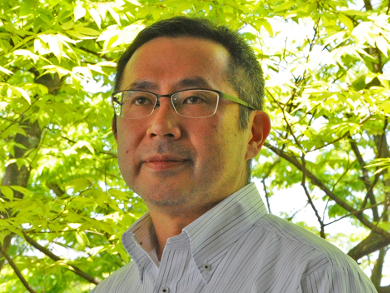Dr. Jonathan Faiz, Deputy Editor of ChemPlusChem, talked to Yasujiro Murata, Kyoto University, Japan, about his work on open-cage C60 derivatives that was published in ChemPlusChem.
Professor Murata, you have explored C=C double bond cleavage on open-cage fullerene C60 derivatives by singlet oxygen. What was the inspiration behind this study?
At an early stage of the project, we had synthesized an open-cage C60 derivative with an eight-membered ring opening and found that it undergoes photochemical cleavage of one of the C=C double bonds under ambient light [1]. After this report, our research progressed a lot, and we could conduct the reaction on a scale of several grams. However, we thought that we would need more efficient reaction conditions.
What did you find?
We had explored the use of a high-pressure mercury lamp, a xenon lamp, a halogen lamp, and a white LED lamp. Now, we use several white LED lamps for one reaction, so that photoirradiation can be carried out from several directions.
The advantages of white LED lamps are that they are cheap and generate less heat. In our current work, we tried to use blue, green, and red LED lamps to improve the efficiency of the photochemical C=C bond cleavage and found that the red one is the most efficient.
What part of the work proved the most challenging?
It took some time to find suitable conditions for the photoirradiation and to determine the kinetic parameters. It was the careful work of my colleague, Mr. Yoshifumi Hashikawa, that allowed this project to be completed.
Why was your attention focused on open-cage fullerene derivatives?
They are very important materials for the synthesis of endohedral fullerenes and heterofullerenes, which are hard to obtain by conventional synthetic methods that require harsh conditions. We believe that these new materials could bring about new phenomena in basic science and new functionalities in the fields of materials and biochemistry.
How will you follow up on this discovery?
We will apply these conditions found in this study toward some other photochemical reactions. We are expecting to find new reaction products that should have interesting structures and properties.
How big an impact do you see your work potentially having on the field of fullerenes and beyond?
That the impact itself might not be so big. However, this approach, which includes careful observations and inventive ideas, should be a nice example for young people working in the laboratory.
Are there any other topics that your lab is currently interested in?
We are interested in putting small molecules inside open-cage fullerene derivatives and closing the opening to synthesize endohedral fullerenes. Recently, we have become interested in chiral molecules having large π-conjugated systems.
Reference
- [1] Photochemical Reaction of the Open-Cage Fullerene Derivative with Singlet Oxygen,
Yasujiro Murata, Koichi Komatsu,
Chem. Lett. 2001, 30, 896–897.
https://doi.org/10.1246/cl.2001.896
The article they talked about
- Wavelength-Dependent Efficiency of Sequential Photooxygenation: C=C Bond Cleavage on Open-Cage C60 Derivatives,
Yoshifumi Hashikawa, Yasujiro Murata,
ChemPlusChem 2018, 83, 1179–1183.
https://doi.org/10.1002/cplu.201800464More articles on novel aromatic compounds can be found in the virtual issue Novel Aromatics.




